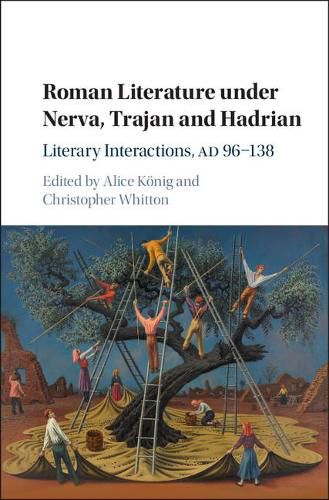Readings Newsletter
Become a Readings Member to make your shopping experience even easier.
Sign in or sign up for free!
You’re not far away from qualifying for FREE standard shipping within Australia
You’ve qualified for FREE standard shipping within Australia
The cart is loading…






This volume is the first holistic investigation of Roman literature and literary culture under Nerva, Trajan and Hadrian (AD 96-138). With case studies from Frontinus, Juvenal, Martial, Pliny the Younger, Plutarch, Quintilian, Suetonius and Tacitus among others, the eighteen chapters offer not just innovative readings of literary (and some ‘less literary’) texts, but a collaborative enquiry into the networks and culture in which they are embedded. The book brings together established and novel methodologies to explore the connections, conversations and silences between these texts and their authors, both on and off the page. The scholarly dialogues that result not only shed fresh light on the dynamics of literary production and consumption in the ‘High Roman Empire’, but offer new provocations to students of intertextuality and interdiscursivity across classical literature. How can and should we read textual interactions in their social, literary and cultural contexts?
$9.00 standard shipping within Australia
FREE standard shipping within Australia for orders over $100.00
Express & International shipping calculated at checkout
This volume is the first holistic investigation of Roman literature and literary culture under Nerva, Trajan and Hadrian (AD 96-138). With case studies from Frontinus, Juvenal, Martial, Pliny the Younger, Plutarch, Quintilian, Suetonius and Tacitus among others, the eighteen chapters offer not just innovative readings of literary (and some ‘less literary’) texts, but a collaborative enquiry into the networks and culture in which they are embedded. The book brings together established and novel methodologies to explore the connections, conversations and silences between these texts and their authors, both on and off the page. The scholarly dialogues that result not only shed fresh light on the dynamics of literary production and consumption in the ‘High Roman Empire’, but offer new provocations to students of intertextuality and interdiscursivity across classical literature. How can and should we read textual interactions in their social, literary and cultural contexts?